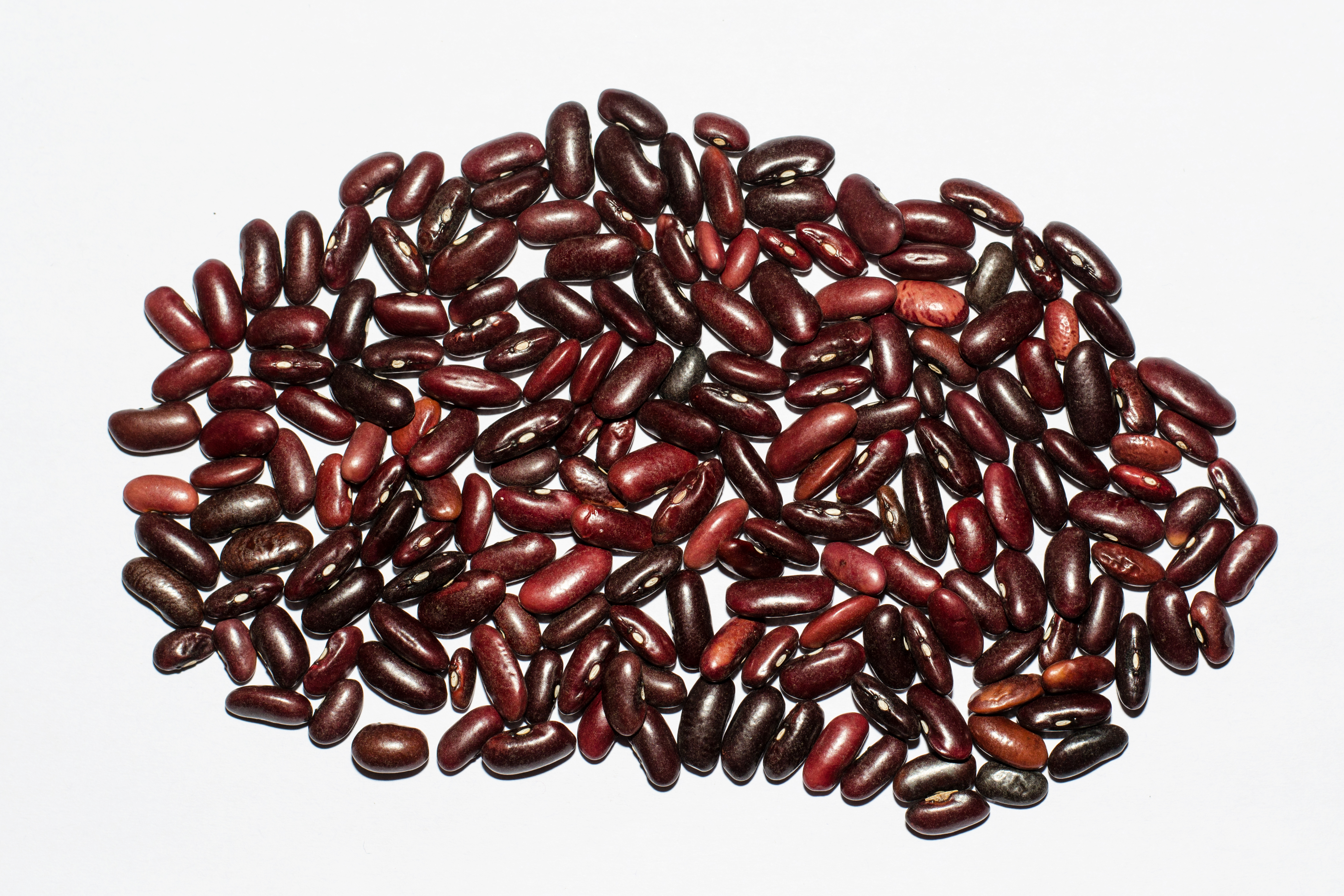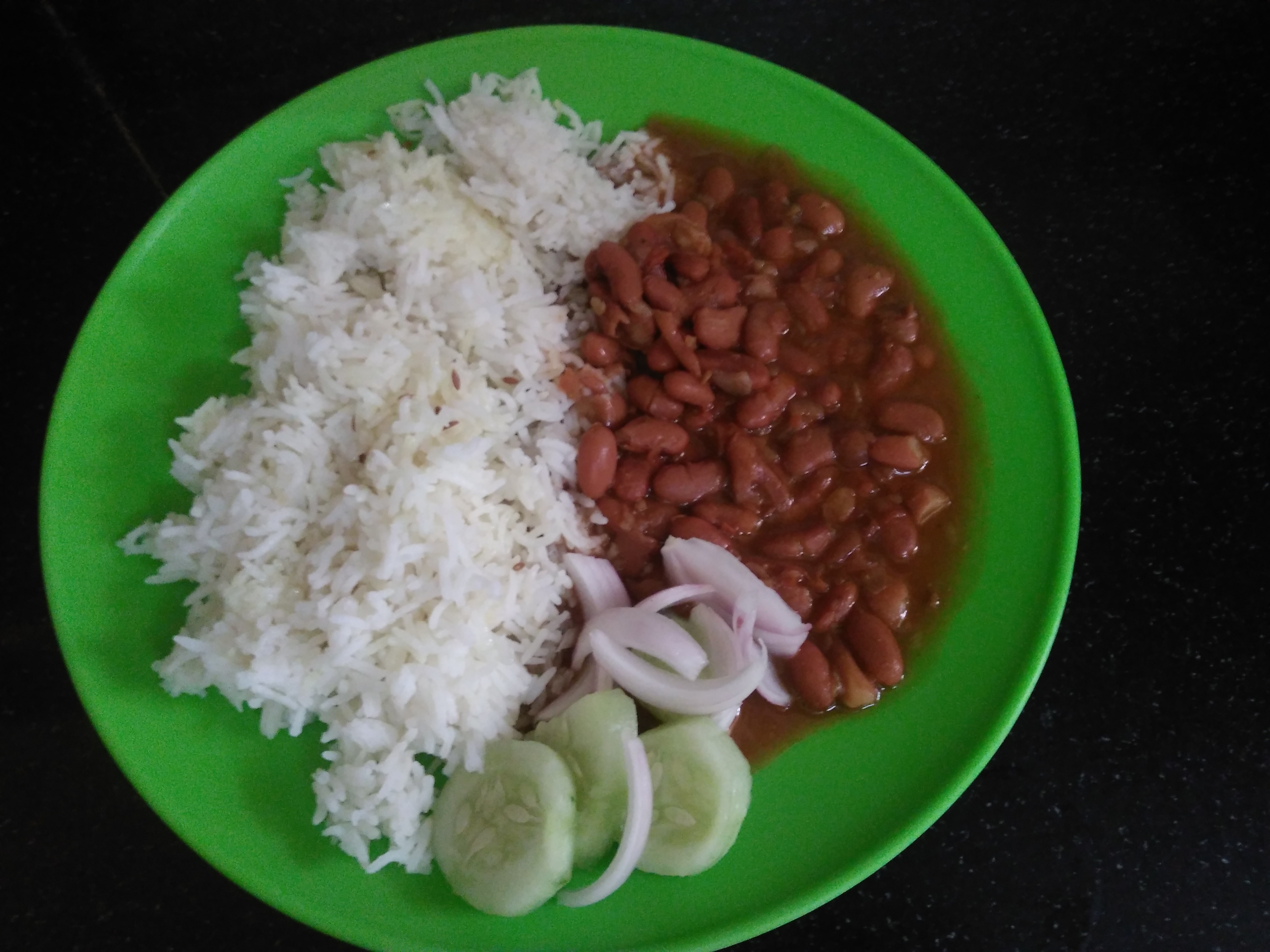Kidney Bean on:
[Wikipedia]
[Google]
[Amazon]
 The kidney bean is a variety of the common
The kidney bean is a variety of the common
 Red kidney beans are commonly used in
Red kidney beans are commonly used in
 The kidney bean is a variety of the common
The kidney bean is a variety of the common bean
A bean is the seed of several plants in the family Fabaceae, which are used as vegetables for human or animal food. They can be cooked in many different ways, including boiling, frying, and baking, and are used in many traditional dishes th ...
(''Phaseolus vulgaris
''Phaseolus vulgaris'', the common bean, is a herbaceous annual plant grown worldwide for its edible dry seeds or green, unripe pods. Its leaf is also occasionally used as a vegetable and the straw as fodder. Its botanical classification, alo ...
''). It resembles a human kidney
The kidneys are two reddish-brown bean-shaped organs found in vertebrates. They are located on the left and right in the retroperitoneal space, and in adult humans are about in length. They receive blood from the paired renal arteries; blo ...
and thus is named after such. Red kidney beans should not be confused with other red beans, such as adzuki bean
''Vigna angularis'', also known as the adzuki bean , azuki bean, aduki bean, red bean, or red mung bean, is an Annual plant, annual vine widely cultivated throughout East Asia for its small (approximately long) bean. The cultivars most familiar ...
s.
Classification
There are different classifications of kidney beans, such as: *Red kidney bean (also known as: common kidney bean, rajma in India, surkh (red) lobia in Pakistan). *Light speckled kidney bean (and long shape light speckled kidney bean). *Red speckled kidney bean (and long shape light speckled kidney bean). *White kidney bean (also known as cannellini in Italy, lobia in India, or safaid (white) lobia in Pakistan).Nutrition
Kidney beans, cooked by boiling, are 67% water, 23%carbohydrate
In organic chemistry, a carbohydrate () is a biomolecule consisting of carbon (C), hydrogen (H) and oxygen (O) atoms, usually with a hydrogen–oxygen atom ratio of 2:1 (as in water) and thus with the empirical formula (where ''m'' may or ma ...
s, 9% protein
Proteins are large biomolecules and macromolecules that comprise one or more long chains of amino acid residues. Proteins perform a vast array of functions within organisms, including catalysing metabolic reactions, DNA replication, respo ...
, and contain negligible fat
In nutrition science, nutrition, biology, and chemistry, fat usually means any ester of fatty acids, or a mixture of such chemical compound, compounds, most commonly those that occur in living beings or in food.
The term often refers spec ...
(table). In a 100-gram reference amount, cooked kidney beans provide of food energy
Food energy is chemical energy that animals (including humans) derive from their food to sustain their metabolism, including their muscle, muscular activity.
Most animals derive most of their energy from aerobic respiration, namely combining the ...
, and are a rich source (20% or more of the Daily Value
The Reference Daily Intake (RDI) used in nutrition labeling on food and dietary supplement products in the U.S. and Canada is the daily intake level of a nutrient that is considered to be sufficient to meet the requirements of 97–98% of health ...
, DV) of protein, folate
Folate, also known as vitamin B9 and folacin, is one of the B vitamins. Manufactured folic acid, which is converted into folate by the body, is used as a dietary supplement and in food fortification as it is more stable during processing and ...
(33% DV), iron
Iron () is a chemical element with symbol Fe (from la, ferrum) and atomic number 26. It is a metal that belongs to the first transition series and group 8 of the periodic table. It is, by mass, the most common element on Earth, right in f ...
(22% DV), and phosphorus
Phosphorus is a chemical element with the symbol P and atomic number 15. Elemental phosphorus exists in two major forms, white phosphorus and red phosphorus, but because it is highly reactive, phosphorus is never found as a free element on Ear ...
(20% DV), with moderate amounts (10–19% DV) of thiamine
Thiamine, also known as thiamin and vitamin B1, is a vitamin, an essential micronutrient, that cannot be made in the body. It is found in food and commercially synthesized to be a dietary supplement or medication. Phosphorylated forms of thi ...
, copper
Copper is a chemical element with the symbol Cu (from la, cuprum) and atomic number 29. It is a soft, malleable, and ductile metal with very high thermal and electrical conductivity. A freshly exposed surface of pure copper has a pinkis ...
, magnesium
Magnesium is a chemical element with the symbol Mg and atomic number 12. It is a shiny gray metal having a low density, low melting point and high chemical reactivity. Like the other alkaline earth metals (group 2 of the periodic ta ...
, and zinc
Zinc is a chemical element with the symbol Zn and atomic number 30. Zinc is a slightly brittle metal at room temperature and has a shiny-greyish appearance when oxidation is removed. It is the first element in group 12 (IIB) of the periodi ...
(11–14% DV).
Dishes
 Red kidney beans are commonly used in
Red kidney beans are commonly used in chili con carne
Chili con carne (also spelled chilli con carne or chile con carne and shortened to chili or chilli; ), meaning " chili with meat", is a spicy stew containing chili peppers (sometimes in the form of chili powder), meat (usually beef), tomatoes an ...
and are used in the cuisine of India
India, officially the Republic of India (Hindi: ), is a country in South Asia. It is the seventh-largest country by area, the second-most populous country, and the most populous democracy in the world. Bounded by the Indian Ocean on the so ...
, where the beans are known as ''rajma
Rājmā ( hi, राजमा, ne, राजमा, ur, راجما), also known as rajmah, rāzmā, or lal lobia, is a vegetarian dish, originating from the Indian subcontinent, consisting of red kidney beans in a thick gravy with many In ...
''. Red kidney beans are used in southern Louisiana
Louisiana , group=pronunciation (French: ''La Louisiane'') is a state in the Deep South and South Central regions of the United States. It is the 20th-smallest by area and the 25th most populous of the 50 U.S. states. Louisiana is borde ...
for the classic Monday Creole dish of red beans and rice
Red beans and rice is an emblematic dish of Louisiana Creole cuisine (not originally of Cajun cuisine) traditionally made on Mondays with Kidney beans, vegetables (bell pepper, onion, and celery), spices (thyme, cayenne pepper, and bay leaf) a ...
. The smaller, darker red beans are also used, particularly in Louisiana families with a recent Caribbean heritage. Small kidney beans used in La Rioja, Spain
La Rioja () is an autonomous community and province in Spain, in the north of the Iberian Peninsula. Its capital is Logroño. Other cities and towns in the province include Calahorra, Arnedo, Alfaro, Haro, Santo Domingo de la Calzada, and N� ...
, are called ''caparrones
Caparrones is a Spanish stew made of ''caparrón'', a variety of red kidney bean, and a spicy sausage chorizo, both of which are local specialties of the Spanish La Rioja region. The shape of ''caparrón'' bean is shorter and rounder than common ...
''. In the Netherlands
)
, anthem = ( en, "William of Nassau")
, image_map =
, map_caption =
, subdivision_type = Sovereign state
, subdivision_name = Kingdom of the Netherlands
, established_title = Before independence
, established_date = Spanish Netherl ...
and Indonesia
Indonesia, officially the Republic of Indonesia, is a country in Southeast Asia and Oceania between the Indian and Pacific oceans. It consists of over 17,000 islands, including Sumatra, Java, Sulawesi, and parts of Borneo and New Guine ...
, kidney beans are usually served as soup called ''brenebon
Brenebon soup or bruinebonensoep is a kidney beans soup commonly found in the Eastern Indonesia, more often specifically associated with Manado cuisine of North Sulawesi. The soup is made from kidney beans with vegetables served in broth seasone ...
''. In the Levant
The Levant () is an approximate historical geographical term referring to a large area in the Eastern Mediterranean region of Western Asia. In its narrowest sense, which is in use today in archaeology and other cultural contexts, it is eq ...
, a common dish consisting of kidney bean stew usually served with rice is known as ''fasoulia.'' To make bean paste, kidney beans are generally prepared from dried beans and boiling until they are soft, at which point the dark red beans are pulverized into a dry paste.
Toxicity
Red kidney beans contain relatively high amounts ofphytohemagglutinin
Phytohaemagglutinin (PHA, or phytohemagglutinin) is a lectin found in plants, especially certain legumes. PHA actually consists of two closely related proteins, called leucoagglutinin (PHA-L) and PHA-E. These proteins cause blood cells to clump ...
, and thus are more toxic than most other bean varieties if not pre-soaked and subsequently heated to the boiling point for at least 10 minutes. The US Food and Drug Administration
The United States Food and Drug Administration (FDA or US FDA) is a List of United States federal agencies, federal agency of the United States Department of Health and Human Services, Department of Health and Human Services. The FDA is respon ...
recommends boiling for 30 minutes to ensure they reach a sufficient temperature long enough to completely destroy the toxin. Cooking at the lower temperature of , such as in a slow cooker
A slow cooker, also known as a crock-pot (after a trademark owned by Sunbeam Products but sometimes used generically in the English-speaking world), is a countertop electrical cooking appliance used to simmer at a lower temperature than othe ...
, can increase this danger and raise the toxin concentration up to fivefold. Canned red kidney beans, though, are safe to eat straight from the can, as they are cooked prior to being shipped. As few as five raw beans or a single undercooked kidney bean can cause severe nausea, diarrhea, vomiting, and abdominal pains.
References
{{reflist Phaseolus Edible legumes